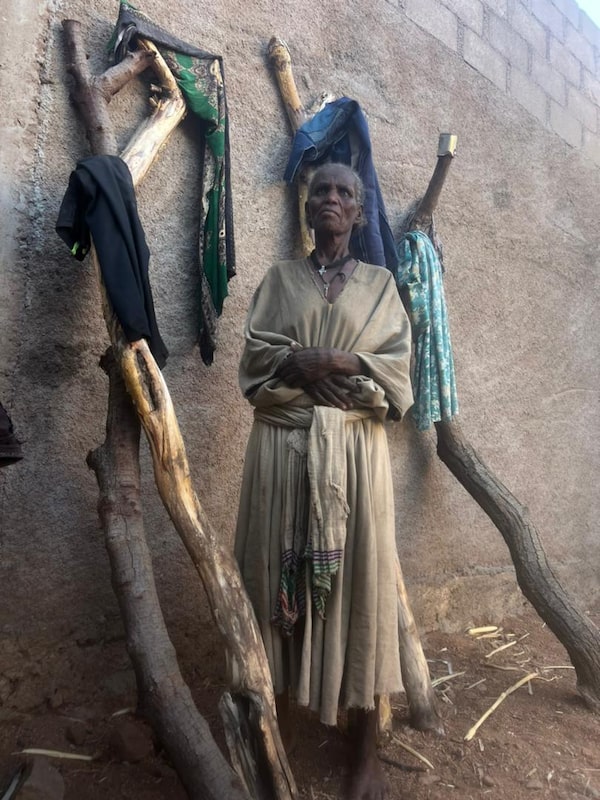
'We are all waiting for our turn to starve to death,' says Tsehay Assefa of Yechila, Ethiopia, who recently buried a son and grandchild killed by hunger.Photography by Samuel Getachew/The Globe and Mail
In the Tigrayan village of Yechila, so many people are dying of hunger that the local officials have lost count. Farmers have abandoned their fields because they are filled with deadly landmines, and starvation is spreading.
The village’s roads and houses are still heavily damaged from missile strikes in the recent war. The local hospital has become a shelter for the homeless.
“We are all waiting for our turn to starve to death,” said Tsehay Assefa, an elderly villager who recently buried her son, a farmer who died of hunger, and one of her grandchildren.
Across the Tigray region, in northern Ethiopia, thousands of people have perished from lack of food in the 14 months since the end of the disastrous two-year war in which Ethiopian and Eritrean soldiers fought against Tigrayan forces. Now drought is compounding the devastation. A famine is looming that could rival the worst famines of the past, relief workers say.
Every day, desperate villagers gather at an aid warehouse in Yechila hoping for food, which has arrived only once in the past month. Many sit outside the village administration office all day, often begging for help, sometimes sleeping there overnight.
Ms. Assefa struggles to help her pregnant daughter, who has not eaten for days but is close to giving birth. She has not dared tell her daughter that death has already touched their family.
“We survive on begging and we eat roasted grain when we can,” she told The Globe and Mail.
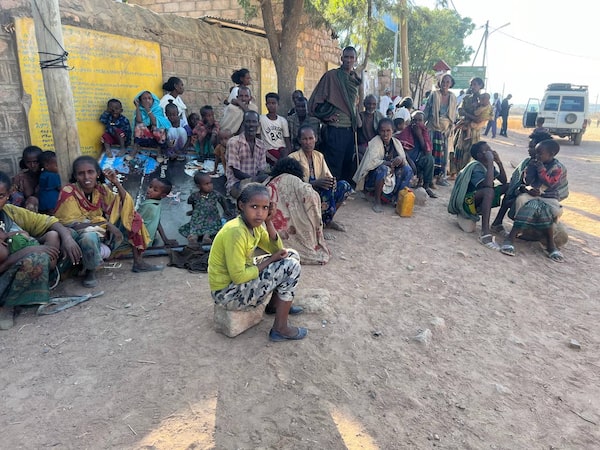
Yechila residents wait for food donations at a warehouse run by the American agency USAID. More than 80 famine deaths have been recorded in Yechila in the past three months.
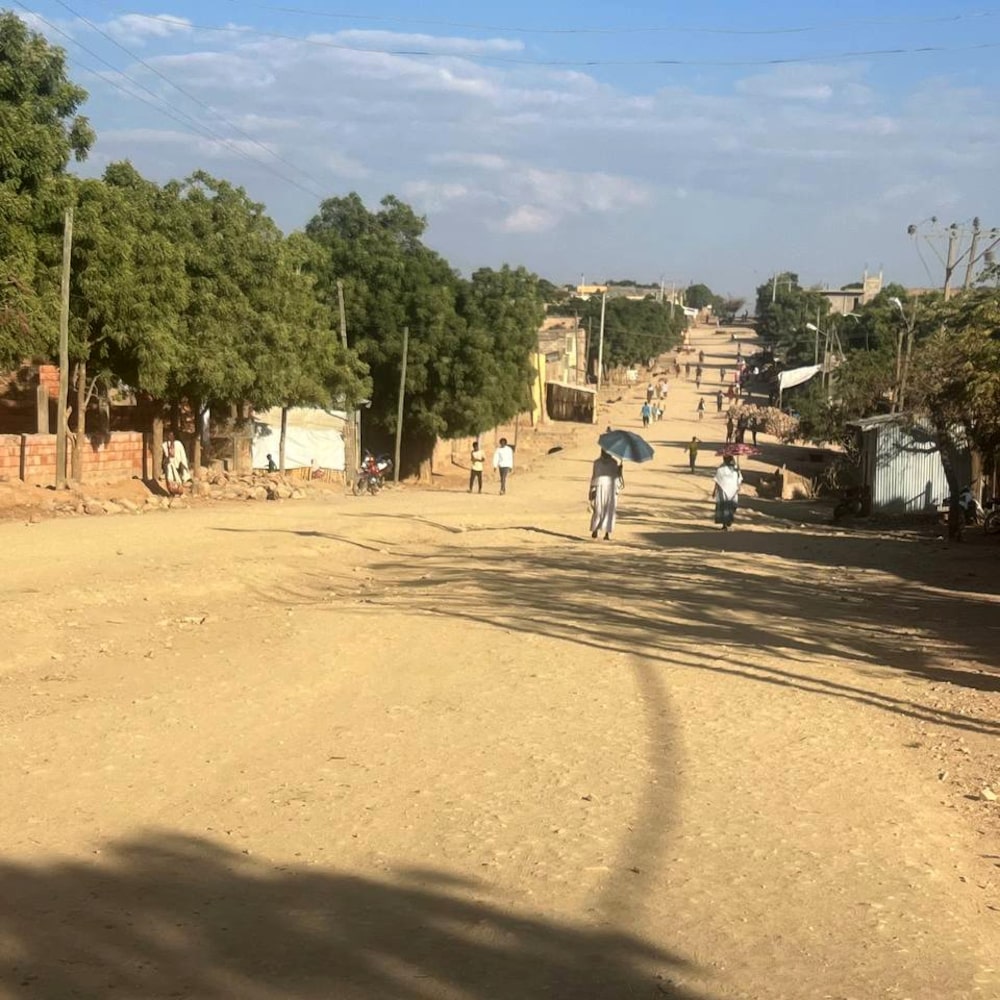
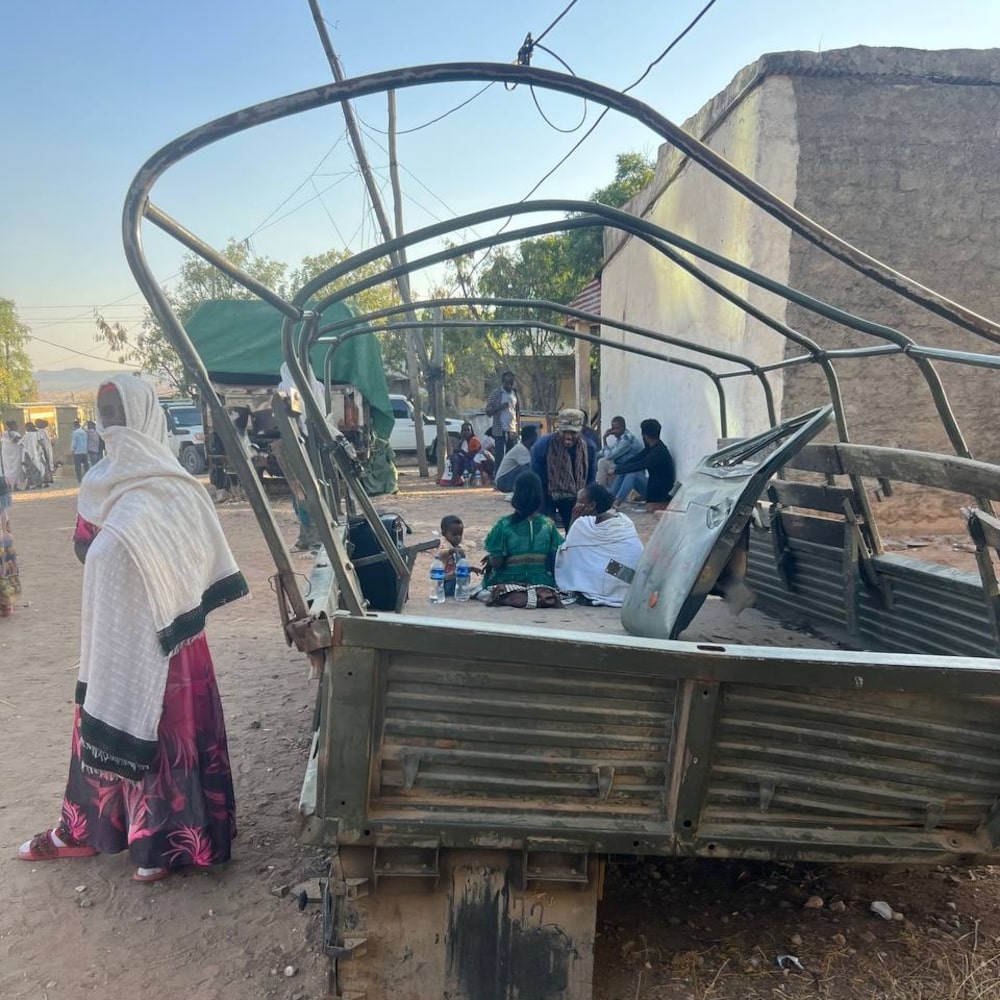
In 1984 and 1985, Tigray was one of the hardest-hit regions of the Ethiopian famine that triggered a wave of global publicity and fundraising, including the Live Aid concert. But the new crisis may be worse. Many of the region’s farms, health clinics and government offices were looted or torched during the war, and there is no money to repair them. A lack of rain and a temporary aid suspension have exacerbated the dire situation.
The Famine Early Warning Systems Network, a humanitarian research group, recently said famine could be widespread in Tigray by early 2024. Tigrayan officials estimate that 3.5 million people need urgent aid, including 2.3 million farmers, in a region of about six million people. Existing aid is helping just one-fifth of the needy, they say.
“This latest famine is much bigger than the 1984 famine,” said Gebrehiwot Gebregzabher, head of the Tigray Disaster Risk Management Commission.
“This famine is invisible, it’s impacting more people, and the response has been minimal, unfortunately,” he told The Globe in an interview.
Mark Lowcock, the United Nations humanitarian chief and emergency relief co-ordinator from 2017 to 2021, says the situation in Yechila reinforces his concern about the crisis. “Experienced and knowledgeable experts tell me the data they are seeing – and their own recent experience travelling in parts of rural Tigray – might point to a catastrophe unfolding in 2024 comparable to the infamous tragedy of 1984-85,” he told The Globe.
“It is essential that policy makers respond to this with much greater speed and urgency, and with much more practical help for those suffering, than we are seeing at the moment.”
The world has paid little attention to Tigray’s crisis. The wars in Gaza and Ukraine have dominated the global spotlight. Media coverage has been hampered by Ethiopian government restrictions on travel. Cellphone access in rural regions is still spotty. Eritrean forces continue to occupy parts of the region, further limiting access.
Humanitarian aid from UN agencies and Western governments was suspended for several months after relief workers found evidence that food aid was being diverted by corrupt Ethiopian and Tigrayan officials. Aid is only now being slowly restored, but it is not enough, Tigrayans say.
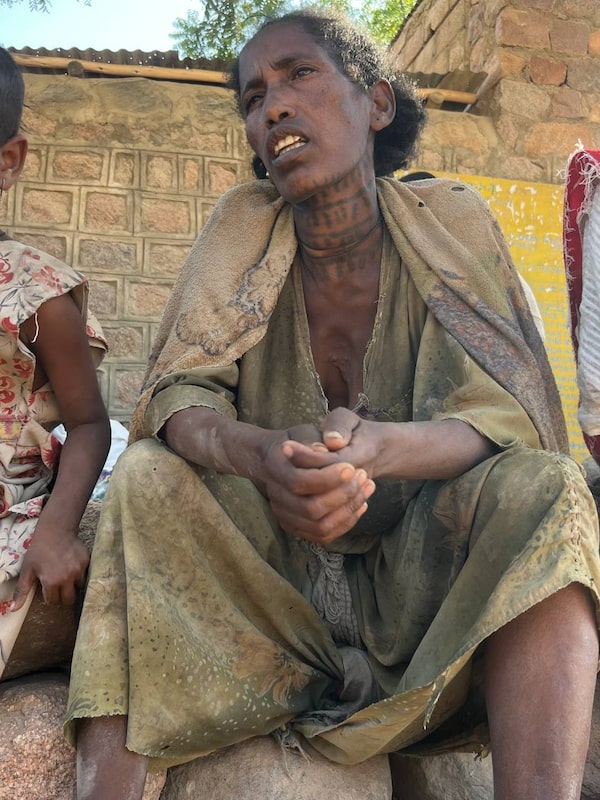
Yemserach Alelegn says her newborn is near death as hunger prevents her from breastfeeding.
“Ours is a slow death,” said Yemserach Alelegn, a 37-year-old mother of six who begs for food in Yechila.
Her husband often skips the family’s meagre meals to give their children more food, but the hunger has become unbearable. “I can’t even breastfeed my newborn, who is near death, and my husband is too weak to stand and walk,” Ms. Alelegn said.
The legacy of the war has been catastrophic. Nearly a million Tigrayans have been displaced from their homes. Trade routes and government services are still disrupted in many places. Livestock and other rural assets were looted or sold. Welfare programs have not been fully restored.
Canada’s ambassador to Ethiopia, Joshua Tabah, travelled to Tigray this month to view the reforms in the UN’s food distribution system. “Now we need to get more food to more vulnerable people for relief, resilience, school feeding and emergency nutrition,” he said in a social-media post.
Yechila, about 100 kilometres southwest of Tigray’s capital, Mekelle, has a population of several thousand. By official count, 83 people have died of hunger here in the past three months, but the true number is much higher.
Red skull-and-crossbones signs are visible in the farmers’ fields, warning of landmines.
“There are many people dying all the time, and we have lost track,” Yechila village administrator Gessese Tadesse said.
“The need is overwhelming. With little resources to support them, we can only see them die before our eyes. They are in the many hundreds, if not thousands, and many more are at risk.”
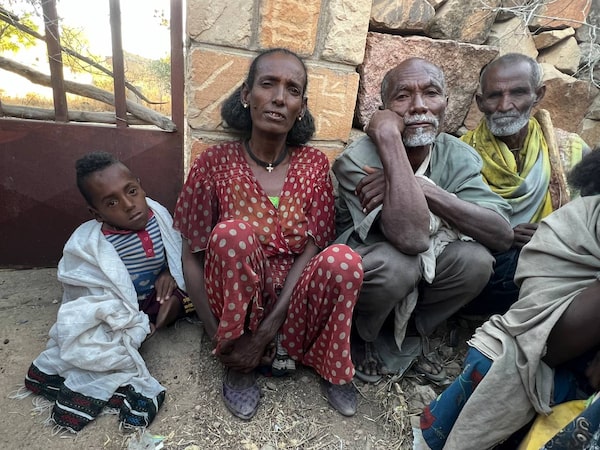
Haregwein Fitsum waits for food aid with her disabled son, her husband and a farmer. She says the family sometimes goes for days without food.
Haregwein Fitsum, 41, hopes for food as she shelters near the village administration office, not far from the burnt-out shells of vehicles that were hit by air strikes during the war. Her husband’s farm is gone. He sold three of his cows and lost the remaining four to hunger.
They have a son with physical disabilities who needs medicine, but hunger has become a bigger threat. “What will ultimately kill him is not his sickness but the fact he does not have anything to eat,” Ms. Fitsum said. “We all go for days without eating.”
Many Tigrayans have moved into Yechila to seek assistance after giving up on their own villages, but they have found little help.
“We are all trying to survive,” said Aleka Zegaye Gebrehawaria, 37, who moved to the village with his six children.
He said he sees deaths every day in his new home. The dead are buried with little ceremony.
“We have all lost dear friends and family members,” he said. “If we die, would anyone notice?”
With a report by Geoffrey York in Johannesburg.